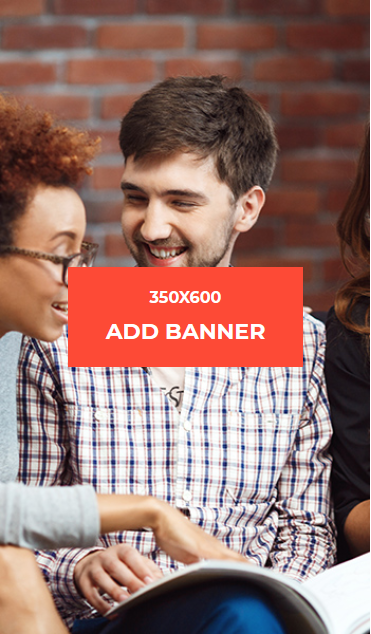T-shirt printing is one of the most popular and creative ways to customize apparel for personal use, businesses, events, or fashion brands. Whether you’re looking to print a single custom T-shirt or bulk orders, understanding the different printing methods, trends, and best practices is essential for achieving high-quality results.
In this comprehensive guide, we’ll cover:
✅ Different T-shirt printing methods (Pros & Cons)
✅ Latest trends in custom T-shirt printing
✅ How to choose the right printing technique
✅ Best fabrics for printing
✅ Design tips for high-quality prints
✅ SEO-friendly tips for T-shirt businesses
Let’s dive in!
1. Popular T-Shirt Printing Methods
Choosing the right printing method depends on factors like budget, design complexity, fabric type, and order quantity. Here are the most common techniques:
A. Screen Printing
Best for: Bulk orders, bold designs, and vibrant colors.
How it works:
-
A stencil (screen) is created for each color in the design.
-
Ink is pressed through the screen onto the fabric.
-
Each color requires a separate screen.
✅ Pros:
✔ Cost-effective for large orders
✔ Durable and long-lasting prints
✔ Vibrant colors
❌ Cons:
✖ Expensive for small batches
✖ Not ideal for complex, multi-colored designs
B. Direct-to-Garment (DTG) Printing
Best for: Detailed, full-color designs and small orders.
How it works:
-
Uses a specialized inkjet printer to apply ink directly onto the fabric.
-
Works best on 100% cotton or cotton-blend shirts.
✅ Pros:
✔ No setup costs (great for small orders)
✔ High detail and photorealistic prints
✔ Soft feel on fabric
❌ Cons:
✖ Higher cost per shirt for bulk orders
✖ Not as durable as screen printing
C. Heat Transfer Printing
Best for: Custom one-off designs, promotional T-shirts, and DIY projects.
How it works:
-
A design is printed on transfer paper and pressed onto the fabric using heat.
-
Includes vinyl heat transfer (HTV) and inkjet transfers.
✅ Pros:
✔ Great for small orders and DIY printing
✔ No minimum order quantity
✔ Allows for intricate designs
❌ Cons:
✖ Less durable than screen printing
✖ Can crack or peel over time
D. Sublimation Printing
Best for: All-over prints, sportswear, and polyester fabrics.
How it works:
-
Uses heat to transfer dye onto synthetic fabrics (polyester).
-
The ink becomes part of the fabric, ensuring long-lasting prints.
✅ Pros:
✔ Fade-resistant and durable
✔ Seamless, vibrant prints
✔ No cracking or peeling
❌ Cons:
✖ Only works on light-colored polyester fabrics
✖ Not suitable for cotton
E. Vinyl Cutting (HTV – Heat Transfer Vinyl)
Best for: Simple designs, logos, and text-based prints.
How it works:
-
A vinyl cutter cuts designs from colored vinyl sheets.
-
The design is heat-pressed onto the fabric.
✅ Pros:
✔ Crisp, clean designs
✔ Great for small text and logos
✔ Durable for multiple washes
❌ Cons:
✖ Not ideal for complex, multi-colored designs
✖ Can feel stiff on fabric
2. Latest Trends in T-Shirt Printing (2024)
🌿 Eco-Friendly Printing
-
Water-based inks and organic fabrics are gaining popularity.
-
Brands are shifting to sustainable printing methods.
🎨 Vintage & Distressed Prints
-
Faded, retro designs are trending in streetwear.
-
Achieved through distressed screen printing or DTG washes.
🌈 Neon & Glow-in-the-Dark Inks
-
Bright, eye-catching colors for festivals and nightwear.
🖼️ All-Over Prints
-
Sublimation printing allows full-coverage designs.
🖋️ Minimalist & Typography Designs
-
Clean, text-based shirts with bold fonts.
3. How to Choose the Right T-Shirt Printing Method
| Factor | Best Printing Method |
|---|---|
| Small order (1-10 shirts) | DTG or Heat Transfer |
| Large order (50+ shirts) | Screen Printing |
| Full-color designs | DTG or Sublimation |
| Bold, simple designs | Screen Printing or HTV |
| All-over prints | Sublimation |
| Eco-friendly option | Water-based screen printing |
4. Best Fabrics for T-Shirt Printing
-
100% Cotton – Best for screen printing & DTG.
-
Cotton-Polyester Blend – Good for DTG and sublimation.
-
Polyester – Required for sublimation printing.
-
Tri-Blend (Cotton/Polyester/Rayon) – Soft, trendy, works well with DTG.
5. Design Tips for High-Quality T-Shirt Prints
✔ Use high-resolution images (300 DPI+)
✔ Keep text large and legible
✔ Avoid too many small details in screen printing
✔ Choose colors wisely (some methods limit color options)
✔ Consider shirt color (dark vs. light fabrics need different techniques)
6. SEO Tips for T-Shirt Printing Businesses
If you run a custom T-shirt business, optimizing your website for search engines is crucial. Here’s how:
🔍 Keyword Optimization
-
Use keywords like:
-
“Custom T-shirt printing near me”
-
“Bulk T-shirt printing services”
-
“Best DTG printing company”
-
📝 Blog Content
-
Write guides like:
-
“How to Start a T-Shirt Business in 2024”
-
“Screen Printing vs. DTG: Which is Better?”
-
🖼️ Image Optimization
-
Use alt text for images (e.g., “Custom printed vintage T-shirts”).
-
Compress images for faster loading.
📱 Mobile-Friendly Website
-
Ensure fast loading speed and easy navigation.
💬 Customer Reviews & Testimonials
-
Encourage reviews to build trust and improve local SEO.
Final Thoughts
T-shirt printing offers endless creative possibilities, whether for personal use, business branding, or fashion startups. By choosing the right printing method, staying updated with trends, and optimizing your designs, you can create stunning, high-quality T-shirts that stand out.
Need custom T-shirts? Contact a professional printing service today!
FAQs
Q: Which printing method lasts the longest?
A: Screen printing and sublimation are the most durable.
Q: Can I print on dark-colored shirts with DTG?
A: Yes, but it requires a white underbase layer.
Q: What’s the cheapest printing method for small orders?
A: Heat transfer or DTG printing.
Q: How do I prevent my printed T-shirt from cracking?
A: Wash inside out in cold water and avoid high heat drying.



Leave a Reply